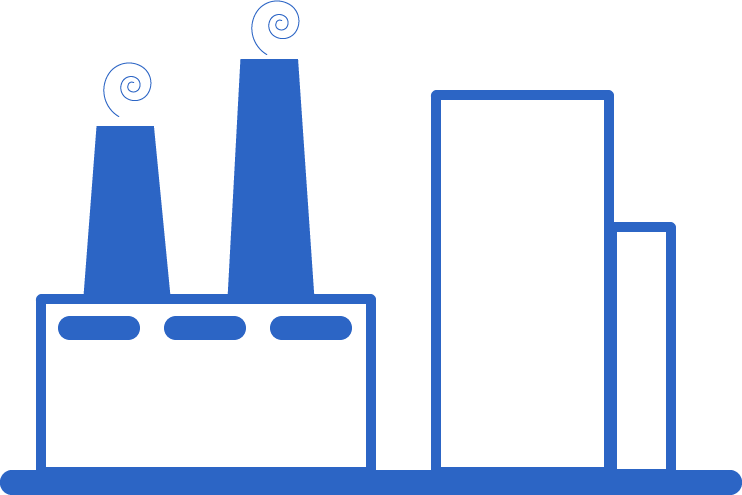Upstream, midstream and downstream are the names used to call out the three different stages, or sectors, of the oil and gas industry. These three stages work together to ensure the flow of fuels and natural gas from the earth to the finished products, however each stage has its own specific purpose and processes.
This article will focus on the third and final stage of the oil and gas industry, the downstream stage.
Downstream
Downstream is the final stage of the oil & gas industry and refers to the refining processes involved with removing contaminants from the resources. It includes everything necessary to turn crude oil and natural gas into finished products. These products may include:
- Gasoline
- Diesel
- Jet fuels
- Natural gas liquids
- Fertilizers
- Preservatives
The purpose of this final stage of the oil and gas industry is to convert the resources into usable products for end users and consumers.
Filters used for downstream refining
Various types of filters are used during the downstream stage of the oil and gas industry. These filters play an important role in the refining of the resources so they can be turned into finished products for consumer use.

Examples of Downstream Applications
Amine sweetening
Amine sweetening involves pre-filtering the natural gas stream to remove any solids or liquids before it enters the contact tower. Hydrocarbons and solid particulates are also removed from the amine during this stage. It is essential that the proper filtration products are used to reduce foaming and corrosion, and help protect the downstream equipment.
Glycol dehydration
Glycol dehydration is used to remove water from natural gas production. Water removal helps reduce the risk of hydrate formation as well as decreases corrosion in the process equipment. Poor removal of solids and liquids can result in lower production and higher operating costs.
Hydrocracking
Hydrocracking refers to the process of breaking down heavy hydrocarbon molecules into lighter, shorter chains that can be used to produce fuel products. Filtration helps improve the process fluid quality by removing any contaminants from sour water or reactor feeds. Pleated and depth media as well as liquid coalescer filters are often used during hydrocracking applications.
Hydrotreating
Hydrotreating is a process used to desulferize petrochemical feedstock through a catalytic conversion. Proper filtration is required to remove contaminants from the catalytic reactions and feedstock, which helps protect the downstream pumps and equipment. Pleated and depth filters are often used during this process.
Final product filtration
Final product filtration takes place when fluids and fuels are transferred for delivery, after processing and refining has occurred. Water, dirt and other contaminants must be removed at this stage to protect processing equipment and extend catalyst life. High-quality micro-filtration and water separation systems are used during this application.

Time to recap! Downstream is the third and final stage of the oil and gas industry. It is the refining stage and involves turning the crude oil and natural gas into usable products. Companies in the downstream stage of the oil and gas industry are the closest link to everyday consumers. In addition to converting the resources into finished products, downstream companies may also engage in the marketing and distribution of the oil and gas products.
Filtersource.com, Inc. has the filtration products and technical expertise to meet your production needs for downstream applications.
Contact us for a quote today!